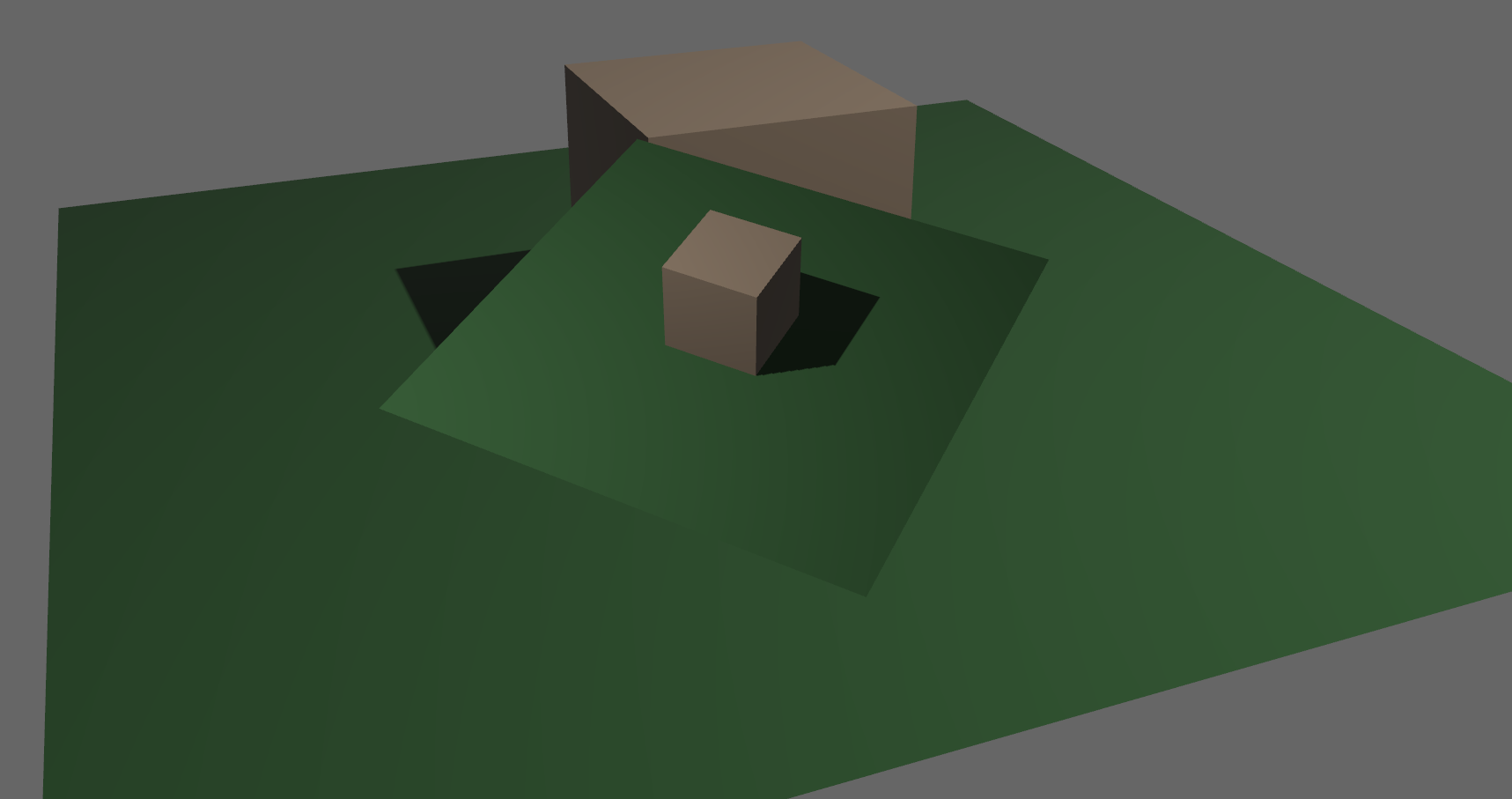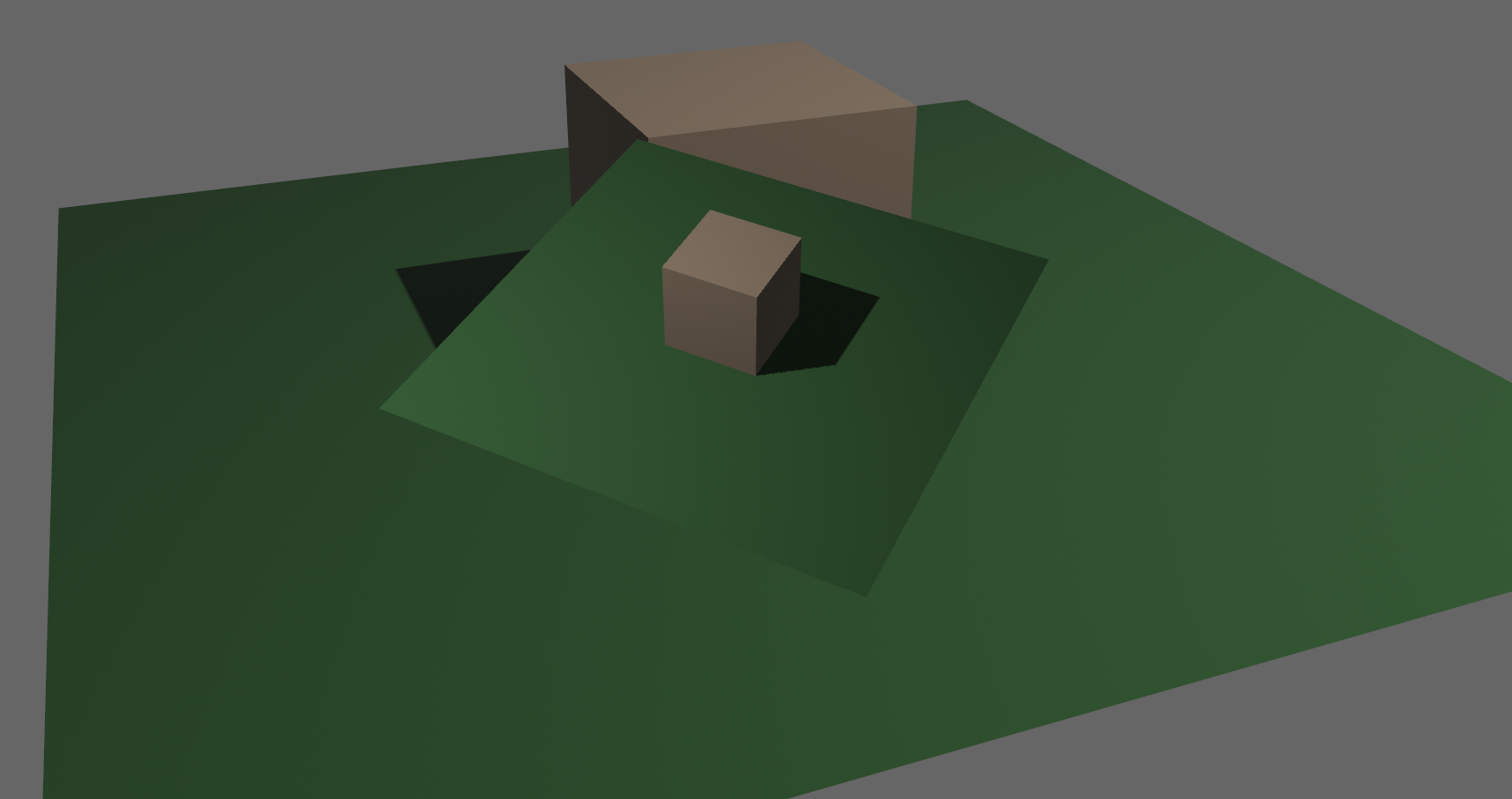# Objective - Closes #5262 - Fix color banding caused by quantization. ## Solution - Adds dithering to the tonemapping node from #3425. - This is inspired by Godot's default "debanding" shader: https://gist.github.com/belzecue/ - Unlike Godot: - debanding happens after tonemapping. My understanding is that this is preferred, because we are running the debanding at the last moment before quantization (`[f32, f32, f32, f32]` -> `f32`). This ensures we aren't biasing the dithering strength by applying it in a different (linear) color space. - This code instead uses and reference the origin source, Valve at GDC 2015   ## Additional Notes Real time rendering to standard dynamic range outputs is limited to 8 bits of depth per color channel. Internally we keep everything in full 32-bit precision (`vec4<f32>`) inside passes and 16-bit between passes until the image is ready to be displayed, at which point the GPU implicitly converts our `vec4<f32>` into a single 32bit value per pixel, with each channel (rgba) getting 8 of those 32 bits. ### The Problem 8 bits of color depth is simply not enough precision to make each step invisible - we only have 256 values per channel! Human vision can perceive steps in luma to about 14 bits of precision. When drawing a very slight gradient, the transition between steps become visible because with a gradient, neighboring pixels will all jump to the next "step" of precision at the same time. ### The Solution One solution is to simply output in HDR - more bits of color data means the transition between bands will become smaller. However, not everyone has hardware that supports 10+ bit color depth. Additionally, 10 bit color doesn't even fully solve the issue, banding will result in coherent bands on shallow gradients, but the steps will be harder to perceive. The solution in this PR adds noise to the signal before it is "quantized" or resampled from 32 to 8 bits. Done naively, it's easy to add unneeded noise to the image. To ensure dithering is correct and absolutely minimal, noise is adding *within* one step of the output color depth. When converting from the 32bit to 8bit signal, the value is rounded to the nearest 8 bit value (0 - 255). Banding occurs around the transition from one value to the next, let's say from 50-51. Dithering will never add more than +/-0.5 bits of noise, so the pixels near this transition might round to 50 instead of 51 but will never round more than one step. This means that the output image won't have excess variance: - in a gradient from 49 to 51, there will be a step between each band at 49, 50, and 51. - Done correctly, the modified image of this gradient will never have a adjacent pixels more than one step (0-255) from each other. - I.e. when scanning across the gradient you should expect to see: ``` |-band-| |-band-| |-band-| Baseline: 49 49 49 50 50 50 51 51 51 Dithered: 49 50 49 50 50 51 50 51 51 Dithered (wrong): 49 50 51 49 50 51 49 51 50 ```   You can see from above how correct dithering "fuzzes" the transition between bands to reduce distinct steps in color, without adding excess noise. ### HDR The previous section (and this PR) assumes the final output is to an 8-bit texture, however this is not always the case. When Bevy adds HDR support, the dithering code will need to take the per-channel depth into account instead of assuming it to be 0-255. Edit: I talked with Rob about this and it seems like the current solution is okay. We may need to revisit once we have actual HDR final image output. --- ## Changelog ### Added - All pipelines now support deband dithering. This is enabled by default in 3D, and can be toggled in the `Tonemapping` component in camera bundles. Banding is a graphical artifact created when the rendered image is crunched from high precision (f32 per color channel) down to the final output (u8 per channel in SDR). This results in subtle gradients becoming blocky due to the reduced color precision. Deband dithering applies a small amount of noise to the signal before it is "crunched", which breaks up the hard edges of blocks (bands) of color. Note that this does not add excess noise to the image, as the amount of noise is less than a single step of a color channel - just enough to break up the transition between color blocks in a gradient. Co-authored-by: Carter Anderson <mcanders1@gmail.com> |
||
|---|---|---|
| .cargo | ||
| .github | ||
| assets | ||
| benches | ||
| crates | ||
| docs | ||
| errors | ||
| examples | ||
| src | ||
| tests | ||
| tools | ||
| .gitattributes | ||
| .gitignore | ||
| Cargo.toml | ||
| CHANGELOG.md | ||
| clippy.toml | ||
| CODE_OF_CONDUCT.md | ||
| CONTRIBUTING.md | ||
| CREDITS.md | ||
| deny.toml | ||
| LICENSE-APACHE | ||
| LICENSE-MIT | ||
| README.md | ||
| rustfmt.toml | ||
What is Bevy?
Bevy is a refreshingly simple data-driven game engine built in Rust. It is free and open-source forever!
WARNING
Bevy is still in the very early stages of development. APIs can and will change (now is the time to make suggestions!). Important features are missing. Documentation is sparse. Please don't build any serious projects in Bevy unless you are prepared to be broken by API changes constantly.
MSRV: Bevy relies heavily on improvements in the Rust language and compiler. As a result, the Minimum Supported Rust Version (MSRV) is "the latest stable release" of Rust.
Design Goals
- Capable: Offer a complete 2D and 3D feature set
- Simple: Easy for newbies to pick up, but infinitely flexible for power users
- Data Focused: Data-oriented architecture using the Entity Component System paradigm
- Modular: Use only what you need. Replace what you don't like
- Fast: App logic should run quickly, and when possible, in parallel
- Productive: Changes should compile quickly ... waiting isn't fun
About
- Features: A quick overview of Bevy's features.
- News: A development blog that covers our progress, plans and shiny new features.
Docs
- The Bevy Book: Bevy's official documentation. The best place to start learning Bevy.
- Bevy Rust API Docs: Bevy's Rust API docs, which are automatically generated from the doc comments in this repo.
- Official Examples: Bevy's dedicated, runnable examples, which are great for digging into specific concepts.
- Community-Made Learning Resources: More tutorials, documentation, and examples made by the Bevy community.
Community
Before contributing or participating in discussions with the community, you should familiarize yourself with our Code of Conduct.
- Discord: Bevy's official discord server.
- Reddit: Bevy's official subreddit.
- GitHub Discussions: The best place for questions about Bevy, answered right here!
- Bevy Assets: A collection of awesome Bevy projects, tools, plugins and learning materials.
If you'd like to help build Bevy, check out the Contributor's Guide. For simple problems, feel free to open an issue or PR and tackle it yourself!
For more complex architecture decisions and experimental mad science, please open an RFC (Request For Comments) so we can brainstorm together effectively!
Getting Started
We recommend checking out The Bevy Book for a full tutorial.
Follow the Setup guide to ensure your development environment is set up correctly. Once set up, you can quickly try out the examples by cloning this repo and running the following commands:
# Switch to the correct version (latest release, default is main development branch)
git checkout latest
# Runs the "breakout" example
cargo run --example breakout
To draw a window with standard functionality enabled, use:
use bevy::prelude::*;
fn main(){
App::new()
.add_plugins(DefaultPlugins)
.run();
}
Fast Compiles
Bevy can be built just fine using default configuration on stable Rust. However for really fast iterative compiles, you should enable the "fast compiles" setup by following the instructions here.
Libraries Used
Bevy is only possible because of the hard work put into these foundational technologies:
- wgpu: modern / low-level / cross-platform graphics library inspired by Vulkan
- glam-rs: a simple and fast 3D math library for games and graphics
- winit: cross-platform window creation and management in Rust
Bevy Cargo Features
This list outlines the different cargo features supported by Bevy. These allow you to customize the Bevy feature set for your use-case.
Third Party Plugins
Plugins are very welcome to extend Bevy's features. Guidelines are available to help integration and usage.
Thanks and Alternatives
Additionally, we would like to thank the Amethyst, macroquad, coffee, ggez, Fyrox, and Piston projects for providing solid examples of game engine development in Rust. If you are looking for a Rust game engine, it is worth considering all of your options. Each engine has different design goals, and some will likely resonate with you more than others.
License
Bevy is free, open source and permissively licensed! Except where noted (below and/or in individual files), all code in this repository is dual-licensed under either:
- MIT License (LICENSE-MIT or http://opensource.org/licenses/MIT)
- Apache License, Version 2.0 (LICENSE-APACHE or http://www.apache.org/licenses/LICENSE-2.0)
at your option. This means you can select the license you prefer! This dual-licensing approach is the de-facto standard in the Rust ecosystem and there are very good reasons to include both.
Some of the engine's code carries additional copyright notices and license terms due to their external origins.
These are generally BSD-like, but exact details vary by crate:
If the README of a crate contains a 'License' header (or similar), the additional copyright notices and license terms applicable to that crate will be listed.
The above licensing requirement still applies to contributions to those crates, and sections of those crates will carry those license terms.
The license field of each crate will also reflect this.
For example, bevy_mikktspace has code under the Zlib license (as well as a copyright notice when choosing the MIT license).
The assets included in this repository (for our examples) typically fall under different open licenses. These will not be included in your game (unless copied in by you), and they are not distributed in the published bevy crates. See CREDITS.md for the details of the licenses of those files.
Your contributions
Unless you explicitly state otherwise, any contribution intentionally submitted for inclusion in the work by you, as defined in the Apache-2.0 license, shall be dual licensed as above, without any additional terms or conditions.




